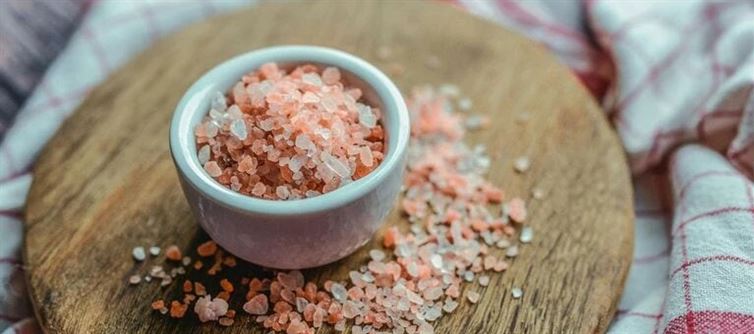
 Indians At High Risk Of Heart Disease and Kidney Disorders Due To Excess Salt Intake Says ICMR Study
Indians At High Risk Of Heart Disease and Kidney Disorders Due To Excess Salt Intake Says ICMR Study

According to a recent study by researchers from the indian Council of Medical Research (ICMR), millions of indians are at increased risk for kidney problems, heart disease, stroke, and hypertension because they consume considerably more salt than they should.
Urban indians use approximately 9.2 grams of salt per day, which is almost twice the recommended amount, whereas the World health Organization (WHO) advises a daily diet of less than 5 grams per person. The average intake is 5.6 grams, which is still above the acceptable limit even in rural areas.
To address what experts are referring to as a "silent epidemic," researchers at the National Institute of Epidemiology (NIE) of ICMR have initiated a three-year salt reduction program in telangana and Punjab. The ICMR-supported initiative is to evaluate how well community-led nutritional counseling can reduce sodium intake and enhance heart health.
Consuming too much salt is one of the main causes of high blood pressure. The study's primary investigator, Dr. sharan Murali, a senior scientist at NIE, told news agency PTI that even a minor change, such as switching to low-sodium salt, can reduce blood pressure by an average of 7/4 mmHg.
A promising remedy is low-sodium salt replacements (LSS), in which potassium or magnesium are used in part to replace sodium chloride. However, scholars caution that pricing and accessibility continue to be major obstacles.
According to a market survey conducted among 300 retail establishments in Chennai, only 28% of them offered LSS. Just 4% of small kirana shops had it, compared to 52% of supermarkets. Furthermore, LSS costs ₹5.6 per 100g, more than twice as much as ordinary iodized salt, which costs ₹2.7.
"The low availability of LSS is likely due to poor demand, which reflects low awareness," stated Dr. Murali. "We need to bridge this gap between health knowledge and everyday access."
The NIE has started a social media awareness campaign called #PinchForAChange as part of the broader effort to inform people about the hidden salt in common meals and promote the use of low-sodium substitutes.
According to Dr. Ganesh Kumar, a senior scientist at NIE and one of the study's co-investigators, the program does more than raise awareness.
"In addition to providing instruction, we are also listening to the community as we co-create educational materials with frontline health workers. The goal is to intervene enduring and grounded in practical issues.
If the program proves effective, it may be expanded across the country, assisting in the integration of counseling for salt reduction into the current public health systems.
"Reducing salt intake isn't the only goal here. "One pinch at a time, it's about changing habits, increasing health literacy, and making heart-healthy choices simpler and more accessible," Dr. murali stated.
Urban indians use approximately 9.2 grams of salt per day, which is almost twice the recommended amount, whereas the World health Organization (WHO) advises a daily diet of less than 5 grams per person. The average intake is 5.6 grams, which is still above the acceptable limit even in rural areas.
To address what experts are referring to as a "silent epidemic," researchers at the National Institute of Epidemiology (NIE) of ICMR have initiated a three-year salt reduction program in telangana and Punjab. The ICMR-supported initiative is to evaluate how well community-led nutritional counseling can reduce sodium intake and enhance heart health.
Consuming too much salt is one of the main causes of high blood pressure. The study's primary investigator, Dr. sharan Murali, a senior scientist at NIE, told news agency PTI that even a minor change, such as switching to low-sodium salt, can reduce blood pressure by an average of 7/4 mmHg.
A promising remedy is low-sodium salt replacements (LSS), in which potassium or magnesium are used in part to replace sodium chloride. However, scholars caution that pricing and accessibility continue to be major obstacles.
According to a market survey conducted among 300 retail establishments in Chennai, only 28% of them offered LSS. Just 4% of small kirana shops had it, compared to 52% of supermarkets. Furthermore, LSS costs ₹5.6 per 100g, more than twice as much as ordinary iodized salt, which costs ₹2.7.
"The low availability of LSS is likely due to poor demand, which reflects low awareness," stated Dr. Murali. "We need to bridge this gap between health knowledge and everyday access."
The NIE has started a social media awareness campaign called #PinchForAChange as part of the broader effort to inform people about the hidden salt in common meals and promote the use of low-sodium substitutes.
According to Dr. Ganesh Kumar, a senior scientist at NIE and one of the study's co-investigators, the program does more than raise awareness.
"In addition to providing instruction, we are also listening to the community as we co-create educational materials with frontline health workers. The goal is to intervene enduring and grounded in practical issues.
If the program proves effective, it may be expanded across the country, assisting in the integration of counseling for salt reduction into the current public health systems.
"Reducing salt intake isn't the only goal here. "One pinch at a time, it's about changing habits, increasing health literacy, and making heart-healthy choices simpler and more accessible," Dr. murali stated.



 click and follow Indiaherald WhatsApp channel
click and follow Indiaherald WhatsApp channel